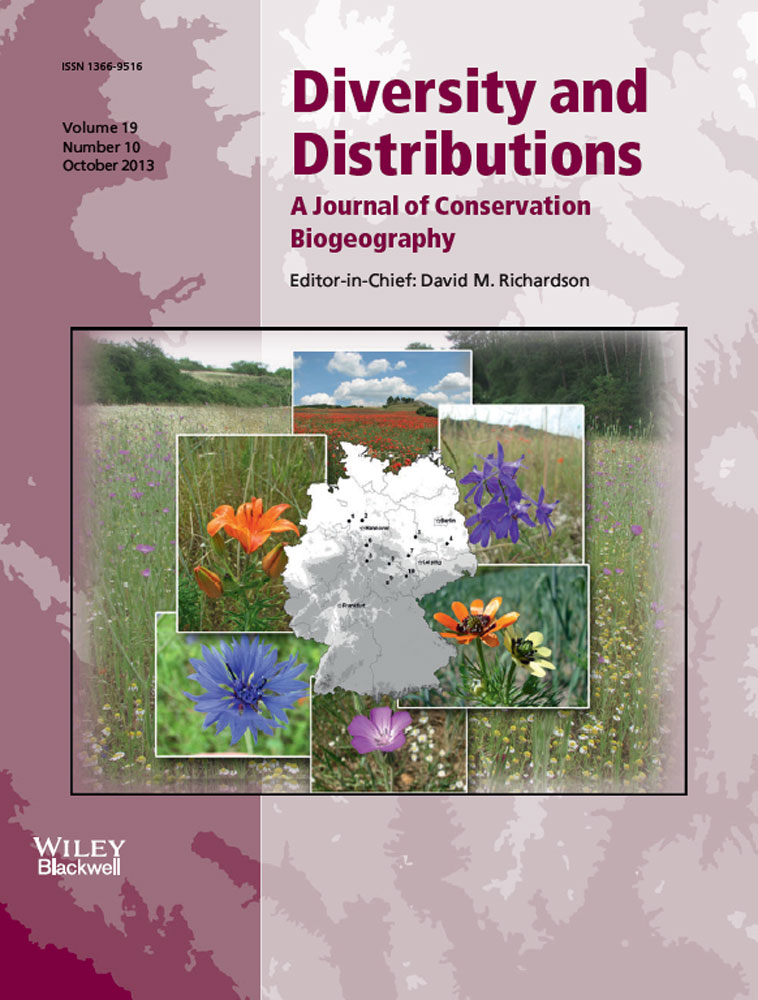Aim: Conservation efforts in Mediterranean-climate regions are complicated by species’ variability in response to multiple threats. Functional type classifications incorporating life history traits with disturbance response strategies provide a framework for predicting groups of species’ response to fire, but it is unclear whether these classifications will be useful when species are exposed to multiple threats or differ in spatial context. We evaluate whether species of the same fire-response functional type exhibit similar responses to disturbance relative to, and in combination with, climate and land-use change and whether the dominant threat depends on spatial context.
Location: Mediterranean southern California.
Methods: We developed species distribution models under current and future climate conditions for two fire-obligate seeding native shrub species that differ in geographical location and area of occupancy. Dynamic habitat maps representing alternative scenarios of climate change and urban growth were coupled with population models and simulated stochastic fire regimes.
Results: The disturbance that defines their classification, fire, is projected to be the most serious threat to both species when fire frequency is high. At longer fire return intervals, however, the projected ranking of threats differed between the species, and spatial context played an important role in defining vulnerability.
Main conclusions: Considering ongoing increases in fire frequency in Mediterranean-climate regions worldwide, functional type classification based on disturbance response may continue to provide a useful framework for biodiversity conservation efforts, but spatial context should also be accounted for. It may be most useful to consider the distribution of vulnerable species with regard to urban development patterns, areas of ‘high-velocity’ climate shifts, and places where altered fire regimes are likely to interact with other threats.


